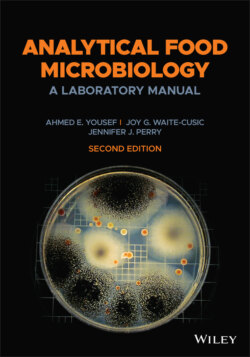Читать книгу Analytical Food Microbiology - Ahmed E. Yousef - Страница 31
SAMPLING TECHNIQUES AND SAMPLE PREPARATION Sampling Tips
ОглавлениеAfter developing the sampling plan, actual sampling should be carefully executed. The following are some tips to be observed during withdrawing, handling, and transporting of samples.
Collect Laboratory Sample in Original Container and Repackage Only if Necessary. Samples are ideally submitted to the laboratory in the original unopened containers. In case of bulk food, or when the original container is too large for submission to the laboratory, a subsample is aseptically transferred to a clean, sterile container.
Use Sterile Sampling Utensils. In the event of repackaging, suitable sterile plastic or metal containers are preferable over glass containers. These containers must be clean, dry, leak‐proof, and of a size suitable for the sample. Sampling tools such as forceps, spatulas, and scissors should be appropriately wrapped and autoclaved prior to use.
Label Samples Appropriately and Create a Sample Record. A proper label should be developed to identify sample contents, date of sampling, sample collector’s name, and other pertinent information (e.g., sample temperature or storage conditions, and type of package from which subsample was taken). The simplest form of labeling is using masking or labeling tape, on which information is written with a permanent marker; this is preferred over writing directly on sample container. In addition to the information on the label, a record should be created to document additional pertinent information, such as the times of collection and of arrival at the laboratory, condition of sample at the time of arrival, etc. In some food inspection agencies, the label on the sample package is replaced with a barcode that is linked to a record in an electronic database.
Deliver Samples Promptly and Control Temperature During Transportation. Samples of refrigerated food should be kept refrigerated and those of frozen food should be handled and transported in the frozen state. However, samples of refrigerated food should not be frozen at any time; freezing can alter sample microbiota. Holding these samples for considerable time before analysis may alter the microbial burden or profile.
